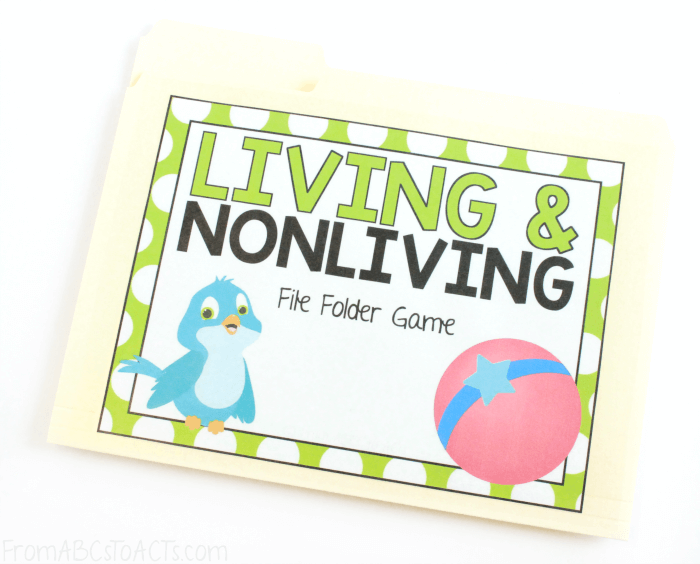This post may contain affiliate links. For more information, please see my full disclosure policy.
As I mentioned in our ladybug life cycle game post, children are curious little creatures that love to explore the world around them. That includes their environment, objects, people, and so much more!
As young children, most items are simply seen as things, not living things or nonliving objects. The concept of living vs. nonliving, however, should be one of the foundational concepts that all other science concepts are built upon as this will give a child the basis that they need to begin making observations and predictions.
If it is a living thing, for instance, certain items like food, air, and water will need to be factored in whereas, with a nonliving thing, those are not a concern.
The final game in our 31 days of file folder games series will help your child practice sorting the living and nonliving things that they may find in their own environments.

There are so many ways that you could practice classifying living and nonliving things with your preschooler or kindergartner, but hopefully, this fun file folder game will get you started!
Living and Nonliving
Making this game is super simple!
To get started, attach the included cover to the front of your folder using some clear contact paper. If you’re having trouble, use a small piece or two of double-sided tape between the cover and the folder to cut down on the static while you lay the contact paper over top.

Next, you’ll need to cut out the picture cards and the two labels for the inside of your game.
Attach the labels to the inside of your folder as shown below (one on each side) using some more contact paper and laminate the picture cards for durability.

Under each label, add six Velcro dots to the inside of your folder and attach the opposite side of the Velcro to the backs of your picture cards.

When your pieces are all set, give your child the living and nonliving picture cards (there are 12 total) and have them sort the items and determine whether they are living or nonliving.
If they’re not sure, try discussing with them what living things need in order to survive. Once they are looking at each object knowing that living things need food and water to survive, they can distinguish between the living and nonliving pretty easily.
